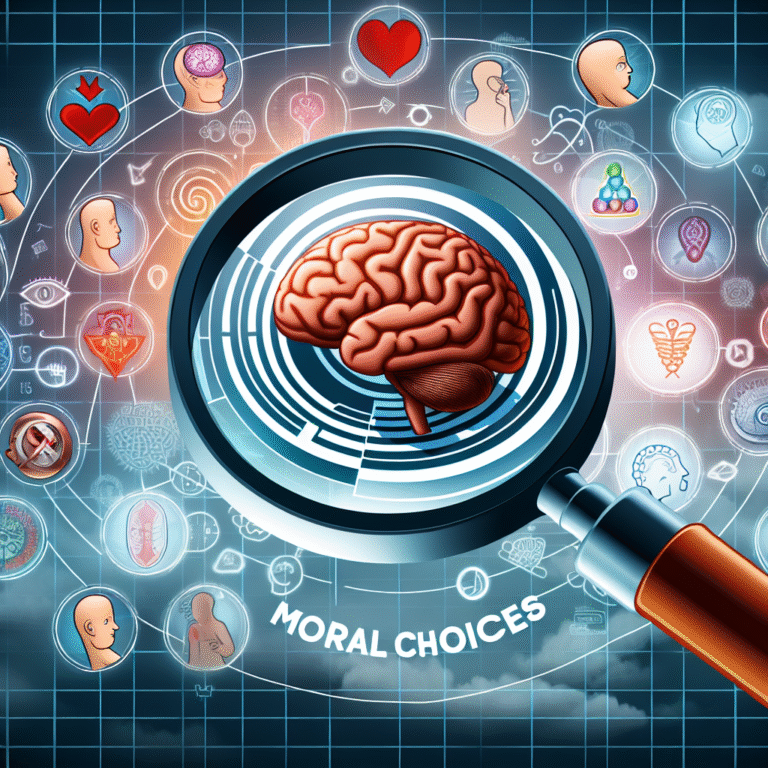
Introduction
In a world still grappling with the complexities of crime and justice, understanding the mind of a criminal has never been more vital. Profiling the perpetrator: how investigators use behavioral analysis has become an essential tool in modern law enforcement. With advancements in psychology and technology, detectives can now delve deeper into criminal behavior than ever before. From serial killers to cybercriminals, the insights gleaned from behavioral analysis not only aid in catching perpetrators but can also prevent further crimes. This article explores the intricacies of criminal profiling, examining how investigators piece together psychological profiles to solve baffling cases.
What is Criminal Profiling?
Criminal profiling, often referred to as offender profiling, is the process of analyzing crime scenes and victim characteristics to develop an understanding of a perpetrator’s traits. This field combines psychology, sociology, and criminology to create a detailed picture of the suspect’s behavior, motivations, and potential future actions.
Historical Context
The roots of behavioral analysis can be traced back to the early 20th century. Pioneers like Dr. Douglas Kelley and Dr. James Brussels began using psychological theories to analyze criminals, paving the way for modern profiling methods. The establishment of the Behavioral Science Unit within the FBI in the late 1970s marked a significant turning point, leading to the systematic application of behavioral analysis in homicide cases.
The Process: How Investigators Profile Perpetrators
Profiling the perpetrator involves various steps, which investigators follow to create an informed profile. Here are the primary elements:
1. Crime Scene Analysis
Crime scenes are the first source of data for investigators. Analyzing the location, method of operation (MO), and signature—distinctive patterns or offenses unique to a perpetrator—are crucial components. Each detail can provide insight into the psychological makeup of the criminal.
| Element | Description |
|---|---|
| Location | Geographic placement can indicate potential suspect pools. |
| Method of Operation (MO) | Techniques used can reveal skill level and background. |
| Signature | Unique behaviors that define the perpetrator’s identity. |
2. Victimology
Understanding the victim is equally important. Investigators explore the victim’s background, social connections, and lifestyle to form potential links to the perpetrator. This step can help identify whether the crime was random or targeted.
3. Behavioral Traits
Once all the data has been collected, investigators analyze behavioral traits. Utilizing knowledge from psychological studies, they create profiles that predict the perpetrator’s behavior and possible motivations.
Key Traits to Consider:
- Psychological Disorders: Identifying mental health conditions that could drive criminal behavior.
- Emotional Triggers: Understanding what might provoke the individual to commit the crime.
4. Creating the Profile
Based on the gathered information, a profile is formulated. The profile serves as a guide, suggesting potential suspects while also indicating personality traits, lifestyle, and possible future behavior.
Case Studies: Real-World Applications
Case Study 1: The Unabomber
One remarkable example of profiling the perpetrator is the case of Ted Kaczynski, infamously known as the "Unabomber." For over a decade, Kaczynski eluded investigators, sending mail bombs to various targets.
Analysis: By examining the nature of his attacks and analyzing the writings he sent, behavioral analysts identified him as a highly intelligent, anti-technology individual who had a complicated relationship with society. This ultimately led to his arrest when his brother recognized his writing style in a published manifesto.
Case Study 2: The Golden State Killer
Decades of unsolved crimes were attributed to the Golden State Killer until investigators utilized DNA technology and behavioral analysis to track him down. This individual committed numerous burglaries, rapes, and murders across California.
Analysis: Investigators utilized criminal profiles to narrow down suspects, examining the behavior patterns and geographic locations of the crimes. When DNA linked Joseph DeAngelo to the crimes, the profile played a crucial role in connecting the dots between his past and the crimes.
Advantages and Limitations of Behavioral Analysis
Advantages
- Prevention: Effective profiling can lead to the prevention of future crimes by predicting the behavior of potential offenders.
- Resource Allocation: Guiding investigations allows police to focus their resources on the most viable suspects.
Limitations
- Subjectivity: Profiles can be influenced by biases, which may lead investigators astray.
- Changing Behavior: Criminals can adapt and change their behavior, rendering profiles less effective over time.
Ethical Considerations in Profiling
While profiling the perpetrator: how investigators use behavioral analysis holds substantial promise, ethical concerns arise. Profilers must avoid reinforcing stereotypes or making assumptions based on race or social status. A well-rounded approach, backed by data and devoid of bias, is essential for meaningful conclusions.
The Future of Behavioral Analysis in Crime Investigation
With the rapid evolution of technology, the future of profiling looks promising. Innovations in artificial intelligence and machine learning will enable investigators to process vast amounts of data efficiently. Moreover, collaborating with mental health professionals will enhance the accuracy of profiles.
Emerging Techniques:
- Machine Learning Algorithms: These may analyze crime patterns and predict future crimes based on historical data.
- Neuroscience: Understanding the brain’s role in behavior will further sharpen the effectiveness of profiling.
Conclusion
Profiling the perpetrator: how investigators use behavioral analysis is more than a fascinating intersection of psychology and law enforcement; it’s a lifeline for solving crimes and protecting communities. By deeply understanding criminal behavior, investigators can not only bring justice to victims but also work towards preventing future offenses. As technology and techniques continue evolving, so too will the depth and accuracy of criminal profiles, leading to safer societies.
Key Takeaways
- Profiling combines crime scene analysis, victimology, and behavioral traits.
- Real-world cases demonstrate the effectiveness of behavioral analysis.
- Ethical considerations are paramount to avoid biases in profiles.
FAQs
1. What is criminal profiling?
Criminal profiling is a technique used by law enforcement to create psychological profiles of offenders based on analysis of crime scenes, victim characteristics, and behavioral traits.
2. How effective is behavioral analysis in solving crimes?
While not foolproof, behavioral analysis has significantly improved the accuracy of suspect identification, leading to successful apprehensions in many high-profile cases.
3. Can behavioral profiling predict future crimes?
Yes, behavioral profiling can identify patterns and signs that suggest a perpetrator’s potential future behavior, allowing for preventive measures.
4. What are the main components of a criminal profile?
The main ingredients include crime scene analysis, victimology, and understanding behavioral traits that contribute to the profile’s formulation.
5. Are there ethical concerns with criminal profiling?
Yes, there are ethical considerations related to ensuring profiles are based on data and not influenced by personal biases or societal stereotypes.
In conclusion, profiling the perpetrator: how investigators use behavioral analysis not only provides a fascinating glimpse into criminal psychology but also showcases the potential for improved law enforcement practices that may one day lead us to a more just world.















